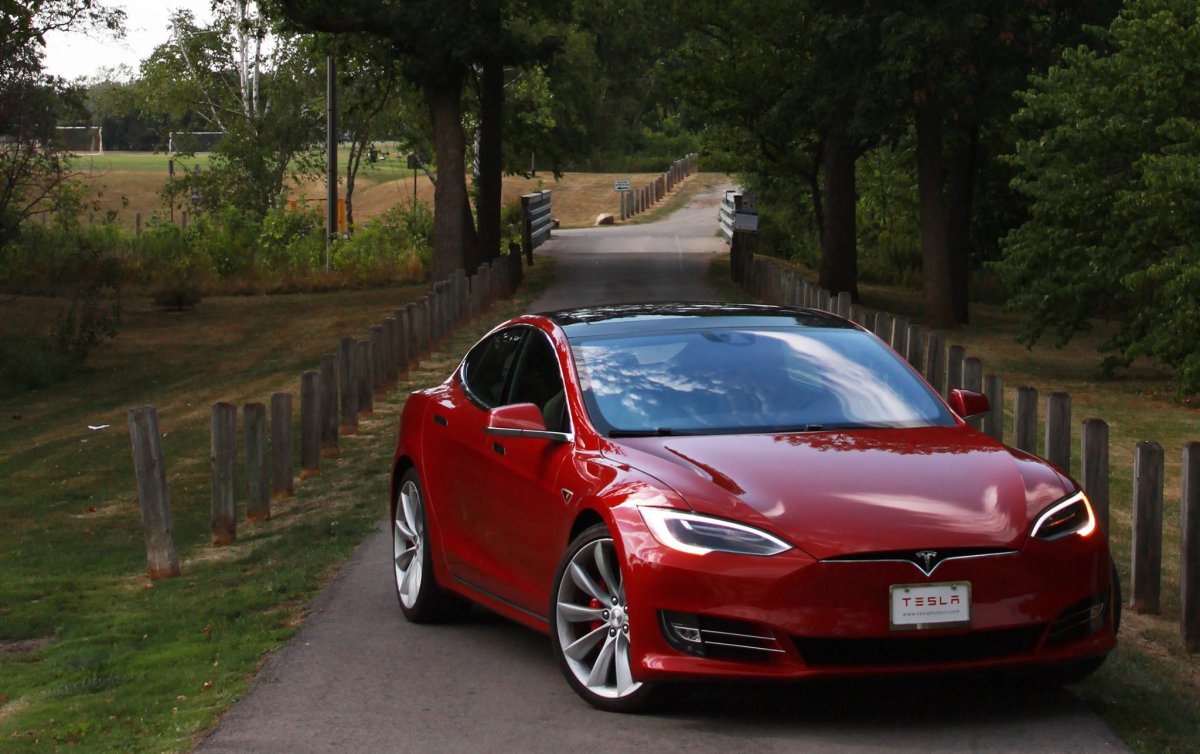Range anxiety. It’s a term associated with electric vehicles, referencing a constant worry that you’ll run out of battery charge and end up getting stranded – something Global News’ consumer reporter Sean O’Shea experienced first hand in 2012.

Electric vehicles have improved significantly since then, and manufacturers have begun to offer more options to potential buyers at a lower cost. Cars like the Nissan LEAF, Bmw i3 and Mitsubishi i-MiEV will offer gas-free commuting with at least 100 kilometres of range in ideal driving conditions.
The only vehicles on the market right now to offer more is the Tesla Model S Sedan and Tesla’s Model X SUV; it can reach gas-free commuting levels of 473 kilometres. Chevrolet’s upcoming Bolt hatchback boasts a claimed range that rivals Tesla’s, but it’s not yet available for purchase.
The Tesla brand is now very familiar to many. This summer, the company unveiled its Model 3 Concept. It’s being billed as an affordable way to ditch the gas pumps for good. Chevrolet’s Bolt is aimed at the same market and has a claimed range that trumps the Model 3’s. Despite the company showing a preliminary design with production still years away, hundreds of thousands lined up to pre-order theirs, showing an interest among drivers to go gas free. But is the car worth the hefty investment? Does it live up to the hype? And does is put consumers’ “range anxiety” at ease?
As part of a new series reviewing autos, Global News put the Tesla Model S to the test.
What’s it like to drive?
The electric motors that power the Tesla can propel the car to 100 km/h in just 2.6 seconds. That kind of acceleration rivals cars like the Lamborghini Aventador SV, which retails for nearly $500,000 in Canada. Electric motors, unlike a conventional engine, can supply full power instantly with very little noise.
To effectively operate an electric car means driving as economically as possible. Every Model S comes standard with a “regenerative braking” system – a means of converting the kinetic energy generated during braking into charge for the car’s batteries. It is helpful for conserving range, but should not be depended on for keeping a full charge.
You can also let the car take charge with the optional Autopilot mode, which essentially lets the car drive itself – to an extent. Autopilot can detect lane lines, other vehicles on the road and their speed. It will accelerate and brake with the help of a series of sensors placed around the car. But what it can’t do is recognize stop signs and traffic signals. The system works very well on highways, but shouldn’t be used on residential streets. As well, drivers should always be ready to manually take over. After all, the system is still in a beta stage and accidents do happen. But even if they didn’t, humans may still be tempted to give in to distraction.
In the end, a Model S can be as gentle as you want it to be, or, as your passengers may find out, more “ludicrious” than you bargained for.
READ MORE: Tesla Autopilot getting ‘massive enhancement’ with radar boost
Is it expensive?
In a word, yes. Tesla’s P90D is in the upper echelon of the Model S series, boasting a hefty sticker price of $132,000 – and that’s before you choose any options. It’s only trumped by the recently announced Model S P100D. The car we tested featured a number of upgrades, including the self-driving “Autopilot” mode, bringing the total cost to a staggering $197,500.
The cheapest in the lineup, the Model S 60, will set you back $75,000 before taxes and fees. Buyers in Ontario and Québec are eligible for a green vehicle rebate, but with a median household income of $78,870 according to Statistics Canada’s latest data, that’s still out of reach for the average Canadian.
The big draw of an electric car is leaving behind the gas pump. So what happens when you take the cost out your electricity bill instead? CAA offers a tool that can give you a rough idea, based on your location, average yearly kilometres and vehicle. In the case of a Tesla Model S P90D, if you drive 20,000 kilometres a year in Ontario, the tool estimated a yearly cost of $1,024 – about $84 per month. By comparison, CAA estimates an average compact car, such as a Honda Civic, would cost around $1,870 in fuel per year.
What’s it like to live with?
Living with a Tesla is quite easy – once you make the right preparations. The vehicle is equipped with adapters that allow it to charge from a standard 110-volt outlet, but that presents an unrealistic recharge period. A P90D with a drained battery would take over 82 hours to charge back to full again. While it’s not likely an owner would drive the car until the battery is empty, even driving 80 kilometres will present a charge time of over 15 hours.
Another option is to use Tesla’s “Superchargers.” They’re powerful public charging stations that are (for the moment) free and will replenish half the battery life in around 20 minutes. The only problem, which is a big one, is they are few and far between across Canada.
READ MORE: Ontario’s electric car goal could lead to increase in hydro rates, expert says
To help bridge the divide, the provincial governments in Québec and Ontario have pledged to install more electric car charging stations in the coming years. As well, Tesla has said they will expand their Supercharger network (though this implementation is likely years away as well).
The simplest way to keep the car charged would be to either buy Tesla’s optional home wall charger, or have a 240-volt outlet installed where you would park the car. A 240-volt outlet can recharge the car fully in just under eight hours. For homeowners, it’s a relatively simple installation. But those who live in condos or rental properties will likely have to get authorization from condo boards first.
Bottom line?
The Tesla Model S, even in its cheapest form, is still out of reach for the average Canadian. But it presents, for now, a realistic and dependable way to live with an electric car. With careful planning on long journeys and smart driving during the daily commute, range anxiety won’t be in a buyer’s vocabulary any more.
(Corrected information on market availability of the Tesla Model X SUV.)















Comments